A herd of bison grazes the golden-hued grasslands, Ferruginous Hawks patrol the skies for jackrabbits, and packs of coyotes yip back and forth across the prairie dog colonies. Thus was our welcoming as we arrived at Reserva Ecológica El Uno near Janos, Chihuahua, Mexico on the afternoon of Nov. 11. The reserve, owned by The Nature Conservancy, is an old cattle ranch spanning more than 45,000 acres of Chihuahuan Desert within the Janos Biosphere Reserve. With just enough sunlight left in the day, we headed out to set up our first round of mist nets and prepare for the next morning’s tasks: catch and place radio transmitters on two species of overwintering birds, Baird’s and Grasshopper Sparrows.
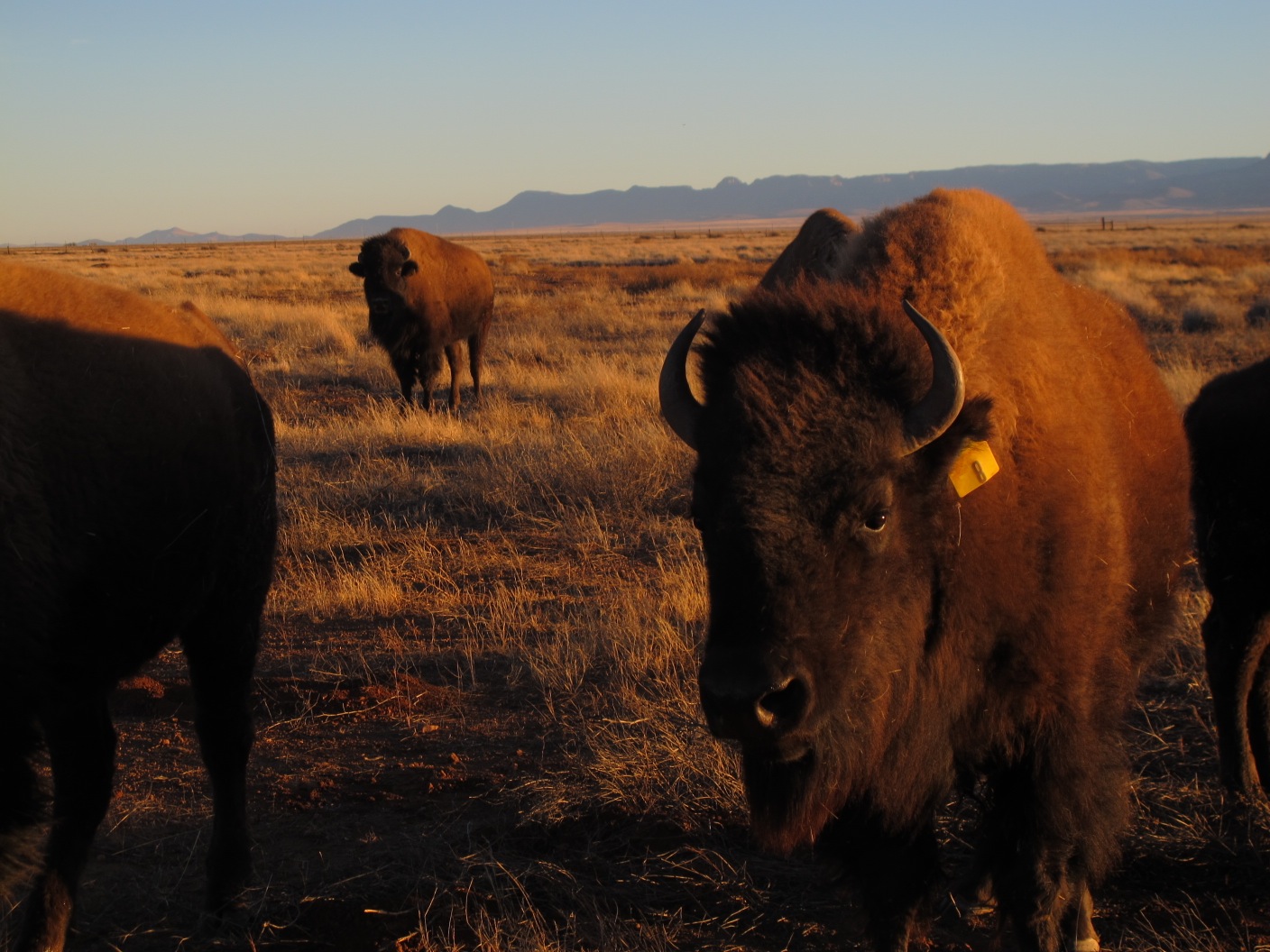
Resident bison roaming Reserva Ecológica El Uno. Photo by Erin Strasser.
Baird’s (Ammodramus bairdii) and Grasshopper Sparrows (Ammodramus savannarum) both breed in the grasslands of the United States and Canada. Baird’s are a rich ochre color with a crown dappled with glossy black feathers and a band of dainty streaks across their breast. The slightly smaller Grasshoppers are large headed with bright yellow feathers at the bend of the wing.
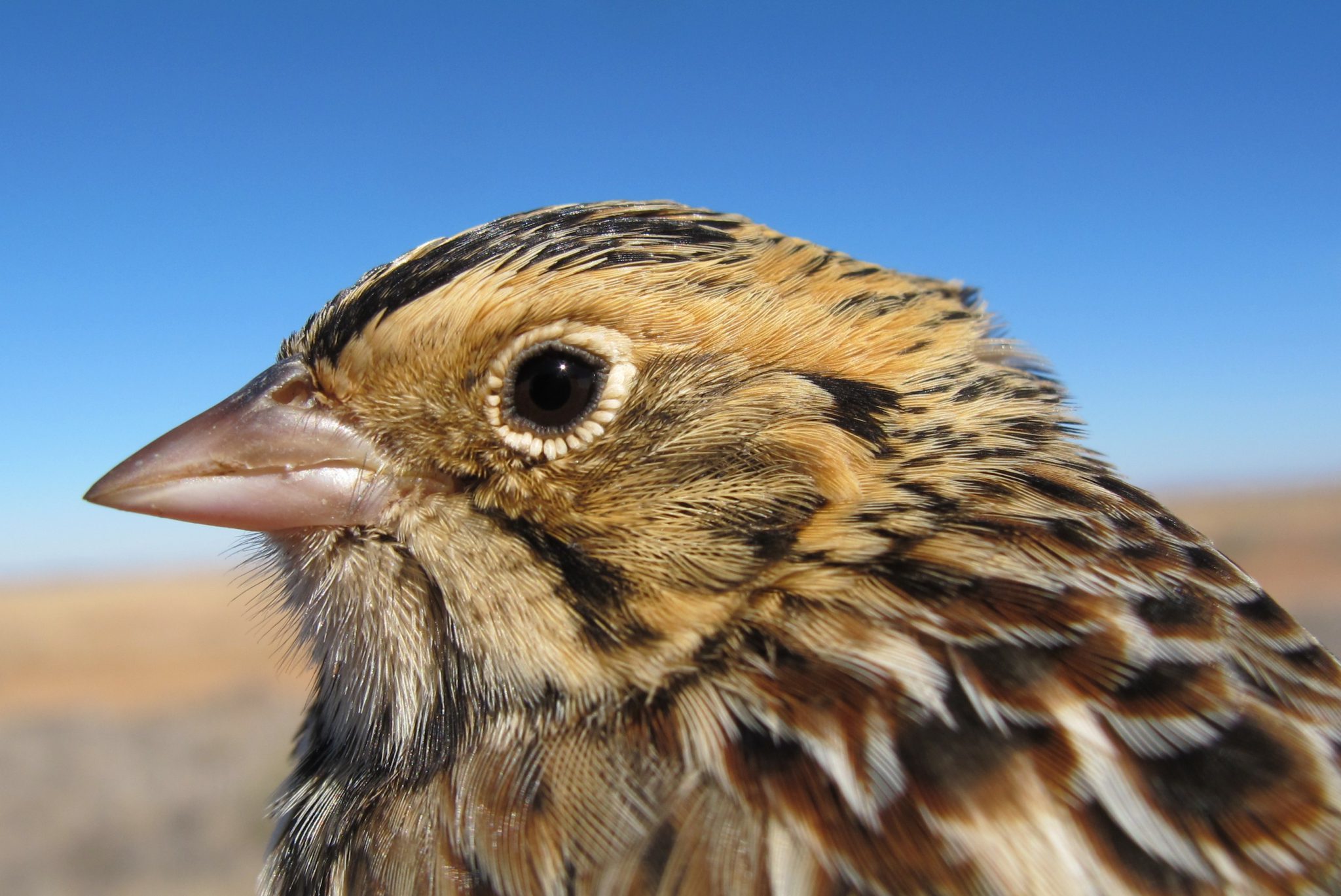
A Baird’s Sparrow, one of the two focal species in RMBO’s study of grassland bird overwintering survival. Photo by Erin Strasser.
Studying Birds’ Overwintering Ecology
Grassland birds such as Baird’s and Grasshopper Sparrows are declining faster than any other group of North American birds. Habitat loss and degradation on the breeding grounds are probable causes for these declines; however, we lack basic knowledge on their overwintering ecology and the processes that affect overwintering survival. Winter is clearly a critical period in a bird’s life cycle; if a bird doesn’t have access to the resources it requires (food, cover from predators, etc.) during winter, it won’t survive or have the energy reserves to migrate back to the breeding grounds.
It is only recently that we’ve begun to pay attention to migratory birds’ overwintering ecology and the role that this plays in survival and – at a larger scale – a species’ population size or distribution. At Rocky Mountain Bird Observatory, we are working to address why grassland birds are declining and how winter habitat conditions affect their persistence. As part of this larger goal, we are studying the overwintering survival and habitat use of Baird’s and Grasshopper Sparrows within the Chihuahuan Desert grasslands, a critical overwintering area for many of North America’s grassland birds. Characterized by swaths of perennial grasslands and desert scrub and surrounded by vast skies that change color on a whim, this unique ecosystem is at risk. Outdated practices, encroachment by shrubs and agricultural development all negatively impact the desert and its avian inhabitants.
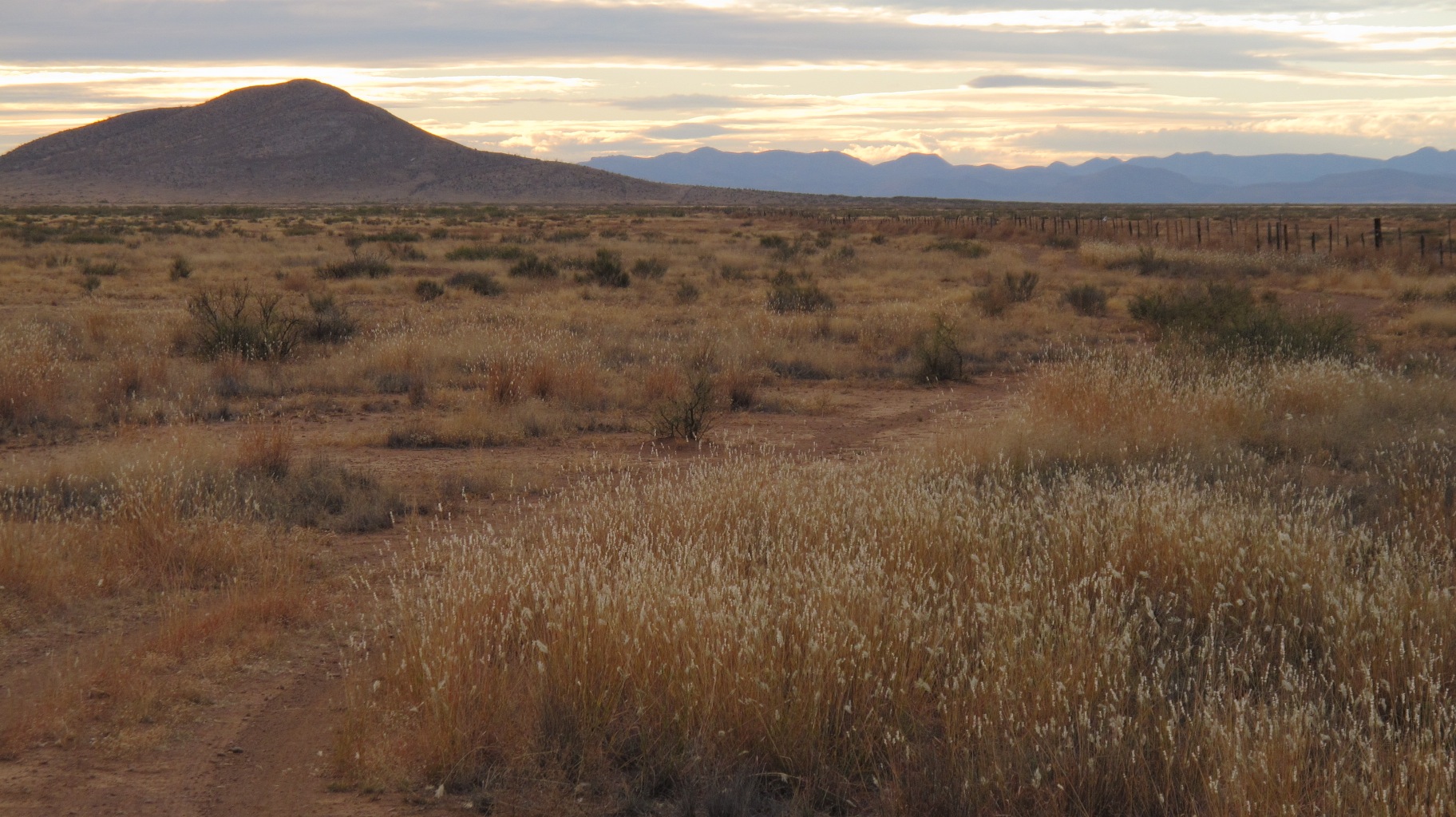
Chihuahuan Desert grassland habitat used by Baird’s and Grasshopper Sparrows. Photo by Erin Strasser.
Radio-Telemetry Offers Insight
To gain insight into overwintering survival and habitat use of our two study species, we are using radio-telemetry. To capture the sparrows, a line of people slowly walks and waves their arms, flushing the sparrows towards meters upon meters of nearly invisible mist nets. Both species evade detection by running on the ground, weaving through the dense grass. If it looked like a mouse, it was most likely a Baird’s or Grasshopper Sparrow.
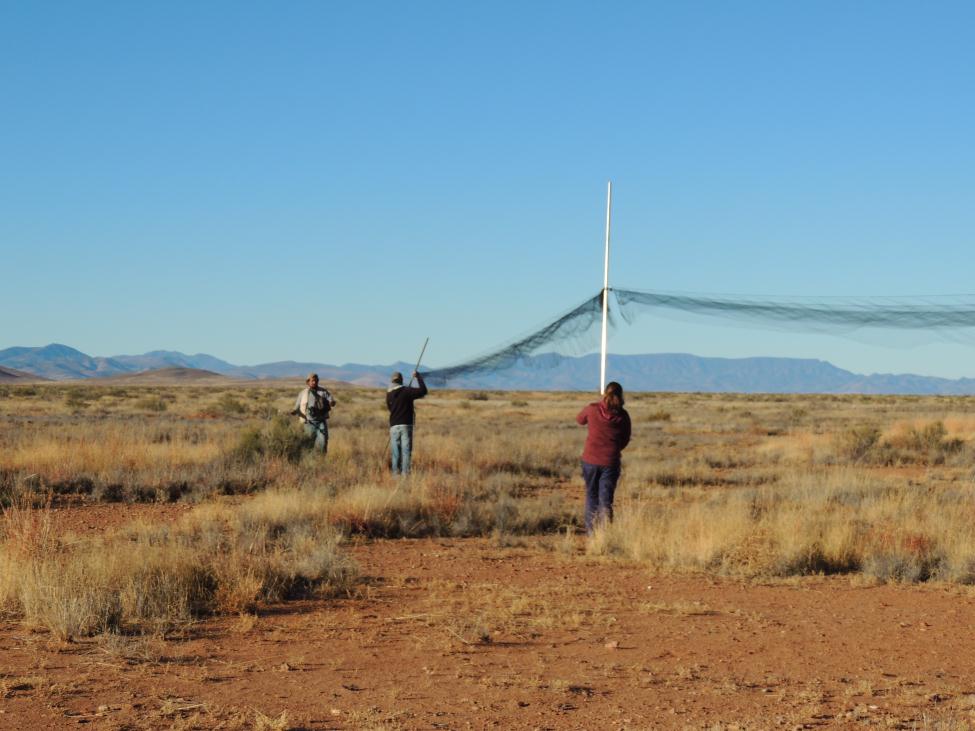
When it’s time to move onto the next banding site, everyone grabs a pole and the entire net span is carried across the grassland. Photo by Denis Perez.
Last year was a particularly dry one, thus grass was sparser and we were concerned that we’d be unable to reach our goal of deploying 33 radio transmitters the first round of banding. We were pleasantly surprised to find a healthy number of birds within our proposed study areas and were able to net our goal in just a few days. We couldn’t have done it without the dedicated efforts of the many individuals involved. Regional biologists, students and professors from the Universidad Autónoma de Nuevo León, Universidad Autónoma de Chihuahua, Universidad Estatal de Sonora and even 60 local schoolchildren participated in the round-up.
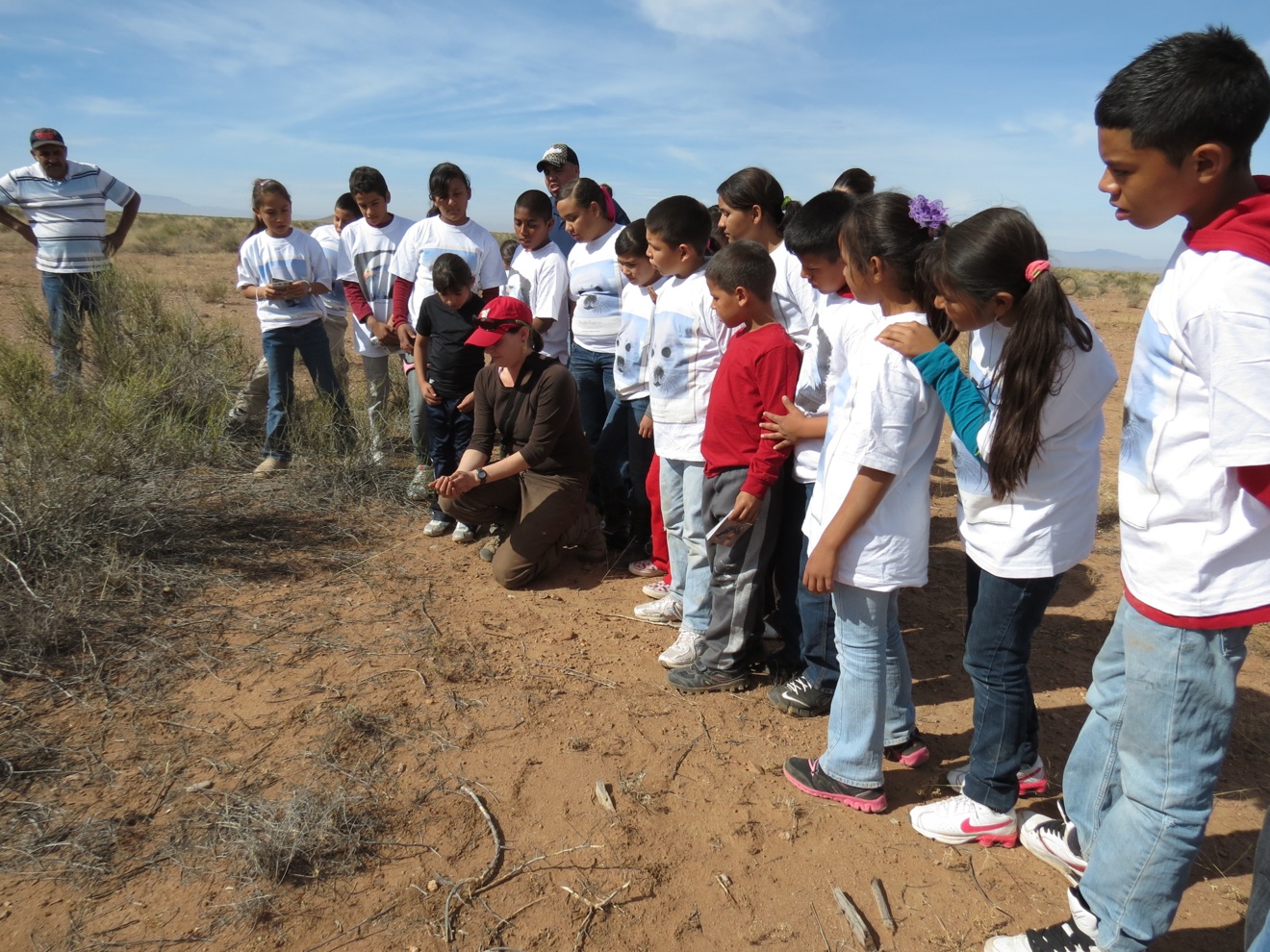
A local school group that helped us with our flush-netting looks on as biologist Erin Strasser releases a sparrow with a new transmitter. Photo by Arvind Panjabi.
After birds were removed from the nets, they were banded, measured and assessed for condition. Many of the birds received a tiny 0.5-gram radio-transmitter placed on their back using a small harness looped around their legs. The transmitters allow us to track the birds’ daily movements, delineate home ranges and determine causes of mortality. Every day, rain, snow, gale-force wind or shine, we locate our birds and use a GPS unit to record their location. Later, we return to gather information on the habitat characteristics.
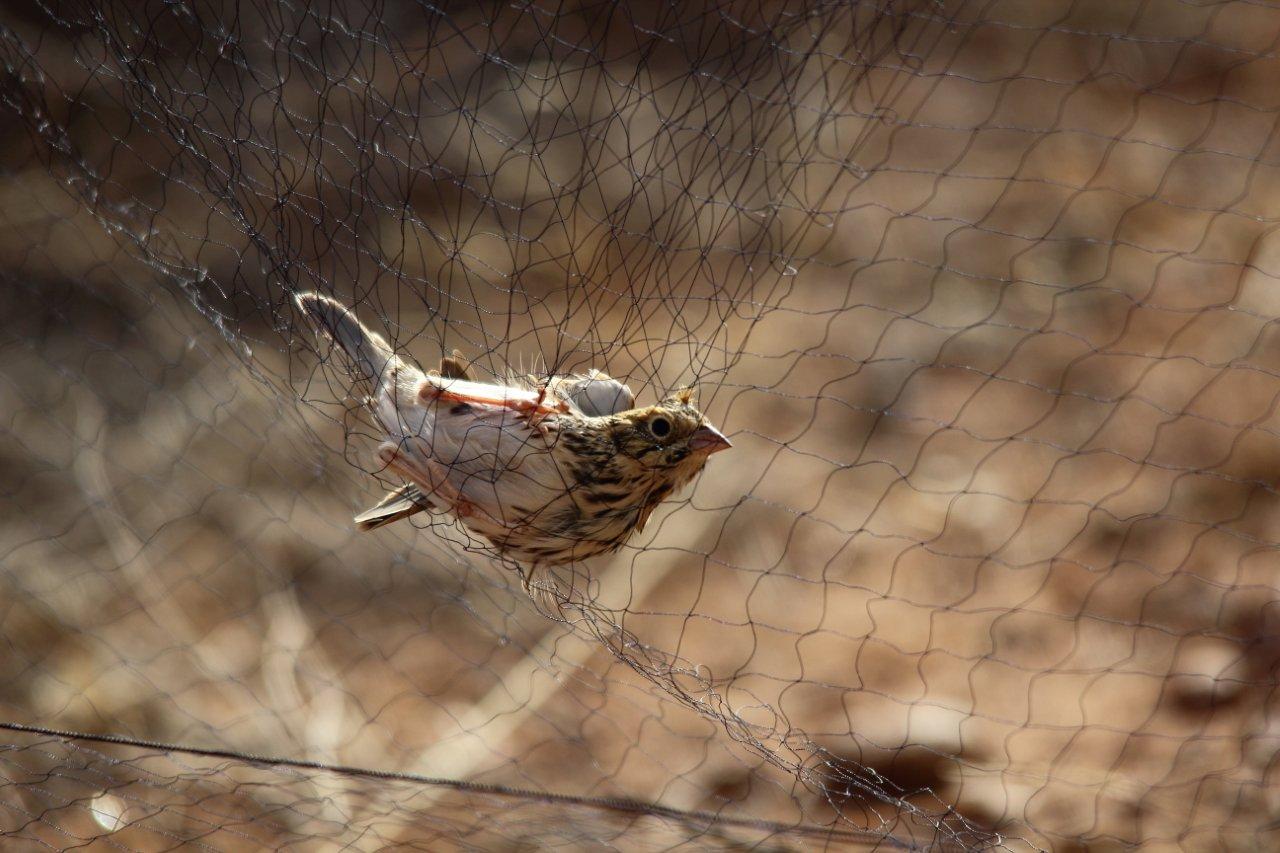
This Baird’s Sparrow was captured in one of our mist nets, removed, measured and fitted with a radio-transmitter. Photo by José Hugo Martínez Guerrero.
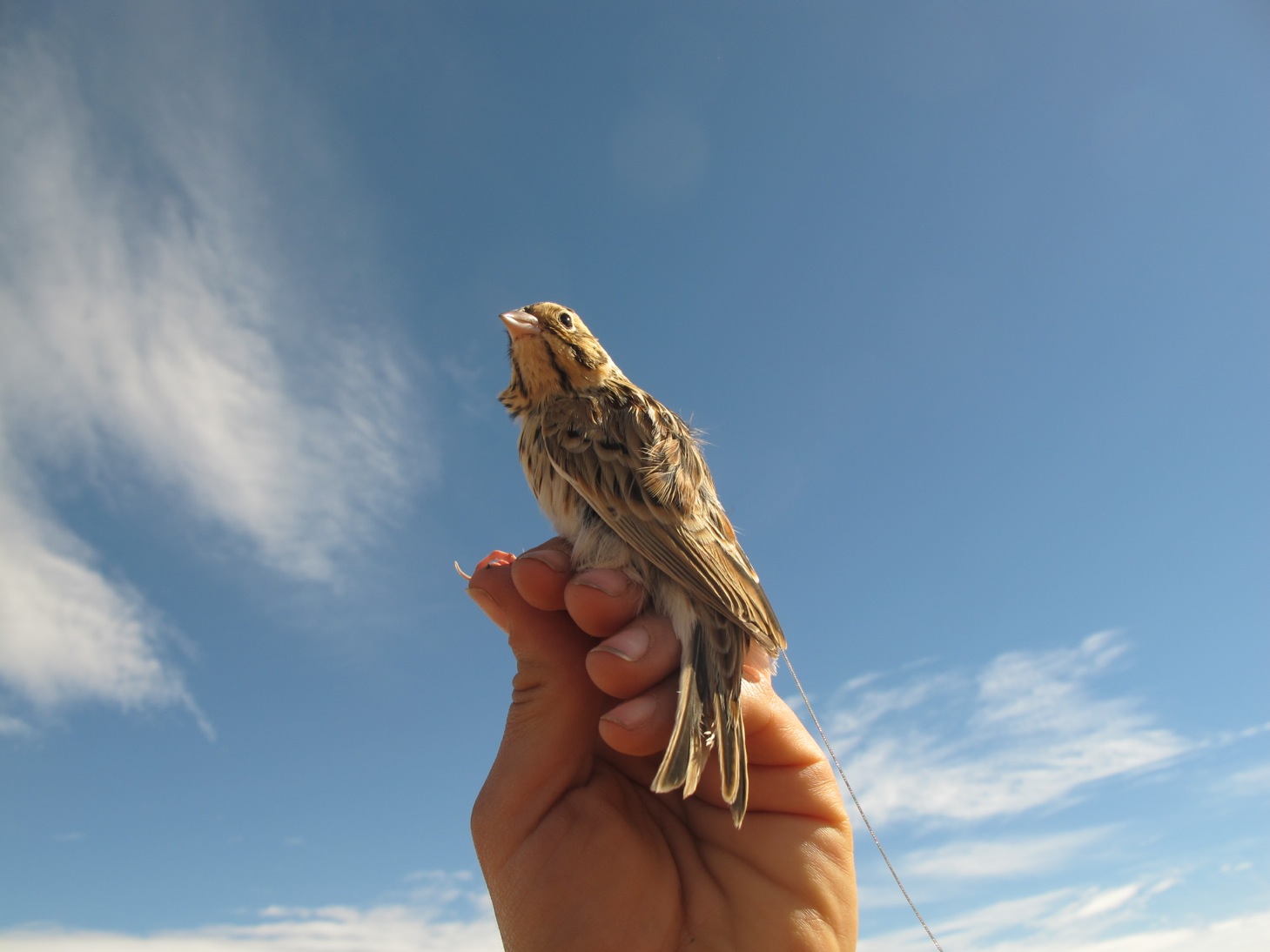
A Baird’s Sparrow wearing a small 0.5-gram radio-transmitter. Photo by Erin Strasser.
From this data, we hope to gain some insight into the causes of mortality, the kinds of survival trade-offs these birds make, which habitat characteristics limit survival and the influence of body condition on habitat use and survival. Are birds utilizing an area with more food even though they are more exposed to predators? Do they require a certain percentage of grass cover for optimal survival? Are poorer condition birds utilizing low quality habitat? Knowledge such as this will aid us in developing habitat conservation and outreach strategies and predict and prepare for how birds will respond to land-use and climate change.
Interesting Discoveries So Far
To date, we’ve been very successful in our efforts: Since Nov. 19, we’ve captured more than 65 sparrows and tracked anywhere from 15 to 40 sparrows daily. We’ve discovered that some birds have more restricted home ranges while others move between two distinct areas several kilometers apart. This has made tracking a challenge as we need to dedicate a good amount of time to scanning along the reserve’s numerous roads or hiking deeper into the grassland. A number of birds have disappeared, and more commonly have fallen victim to one of the many Loggerhead Shrikes, Northern Harriers, Short-eared Owls or Merlins that prowl the area.
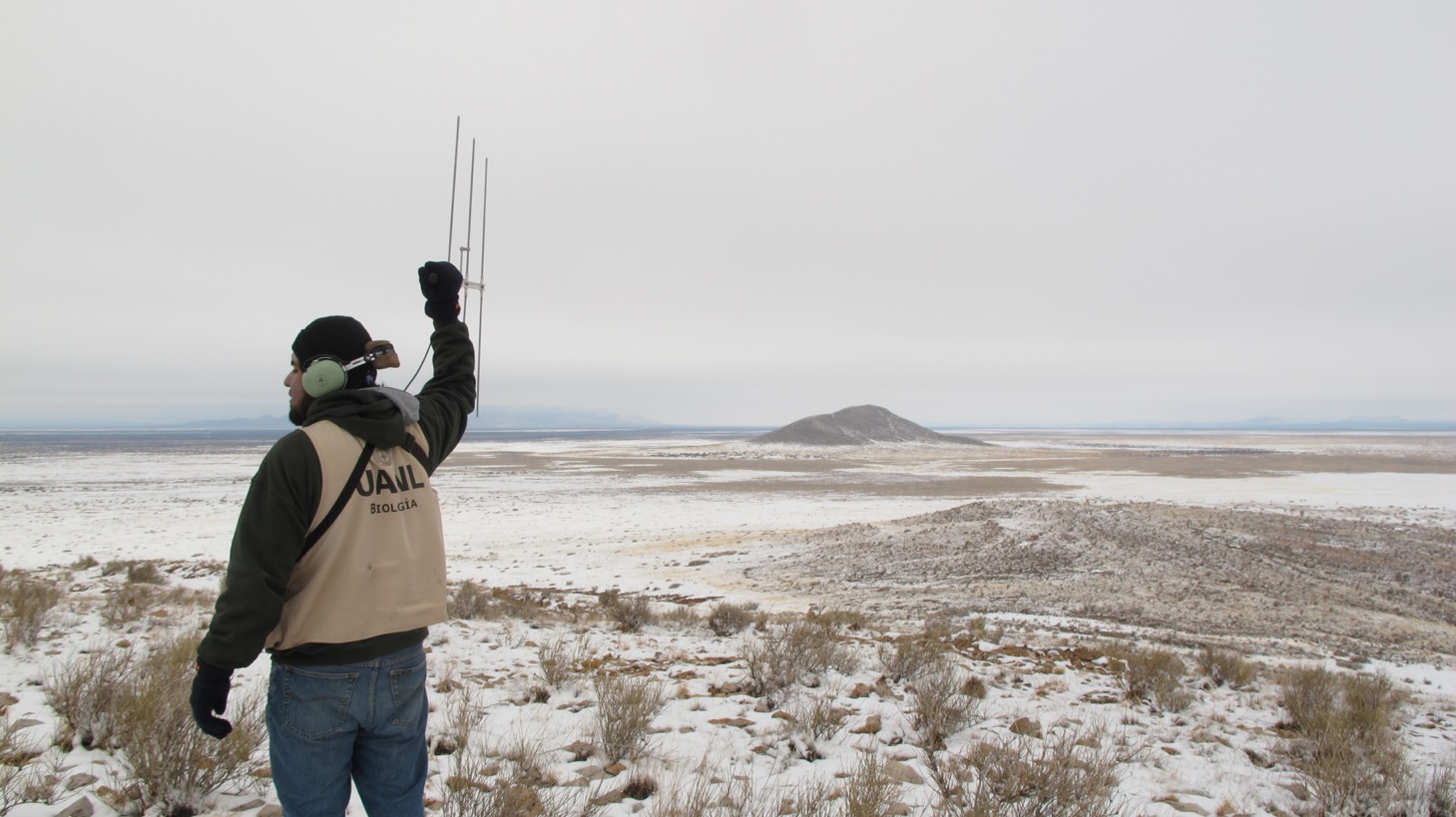
Jesús, a technician from Universidad Autónoma de Nuevo León, scans for missing birds from a high point in the study area. Photo by Erin Strasser.
One particularly interesting discovery was an owl pellet with two transmitters inside. Yes, two! Another shocking finding was an intact sparrow buried, only the antenna visible above ground. I was skeptical that a feline was the culprit; that was until a bobcat was spotted napping in one of our sites!
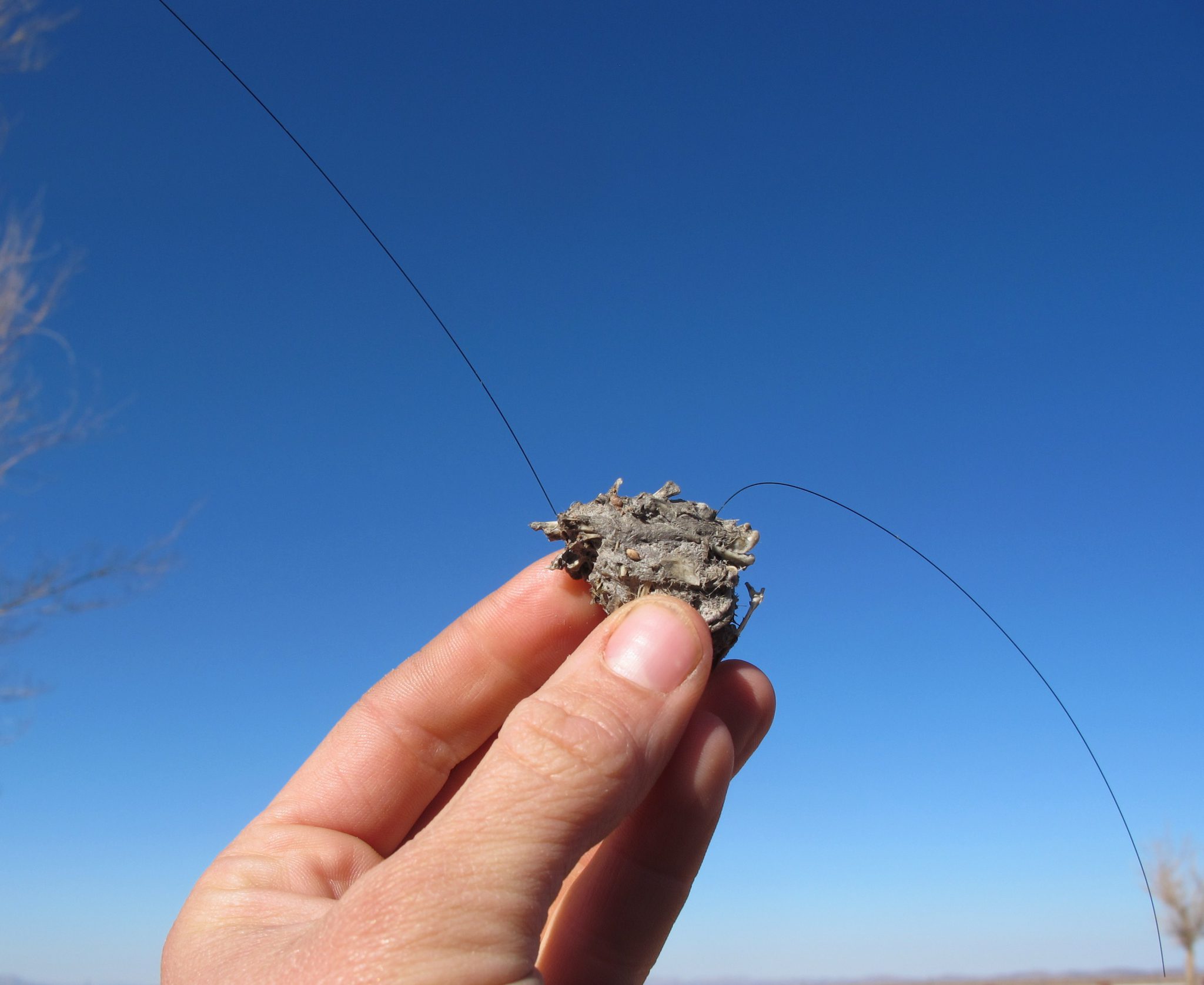
An owl pellet with TWO transmitters inside of it. The two black lines are the antennas. Photo by Erin Strasser.
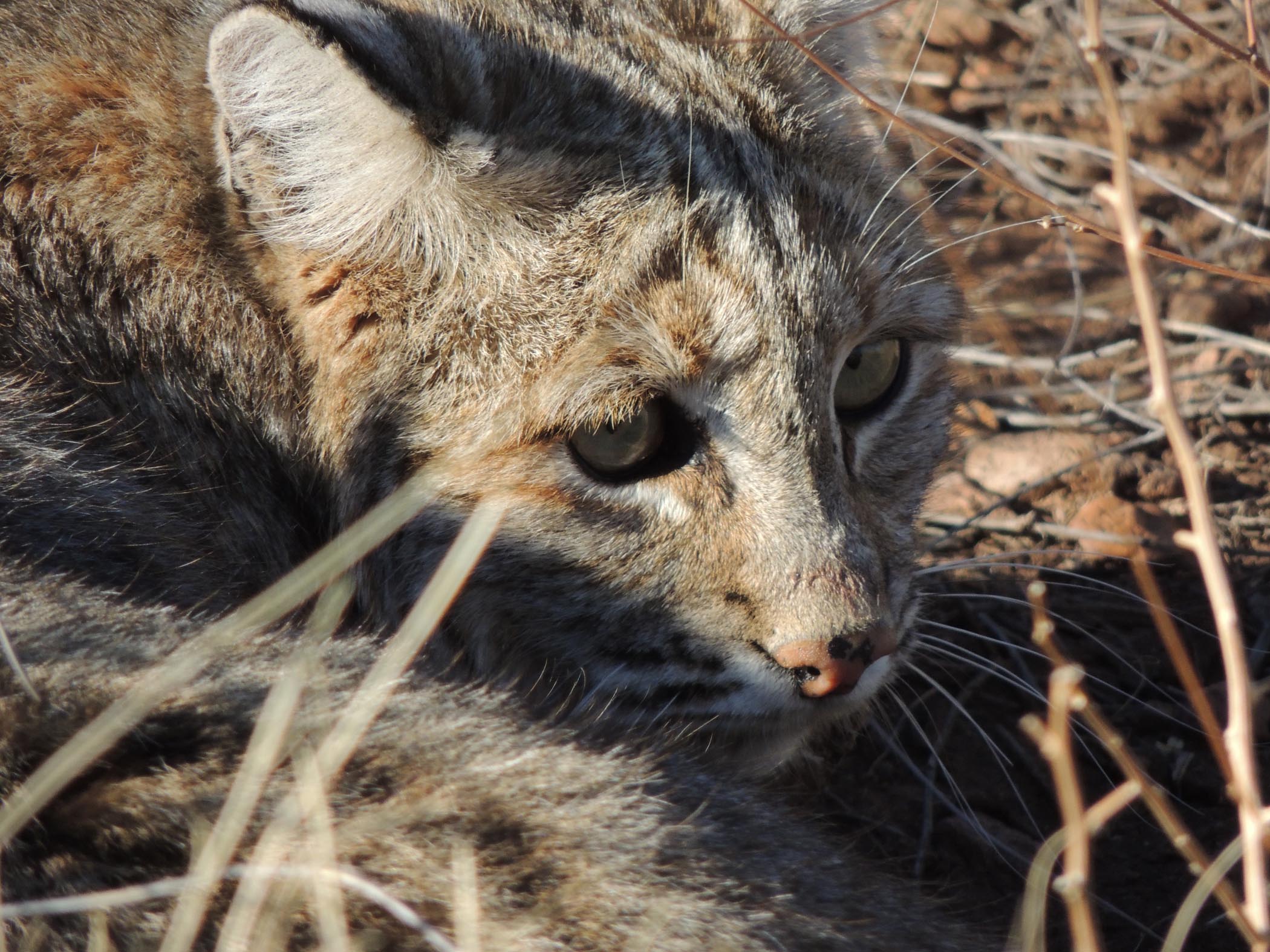
A bobcat sighted in one of our study sites. Photo by Denis Perez.
On any given day, we spot a Merlin or Prairie Falcon patrolling the grasslands. One afternoon, a technician watched in horror as a Prairie Falcon stooped and appeared a few minutes later perched on a fence post, Baird’s Sparrow in talons.
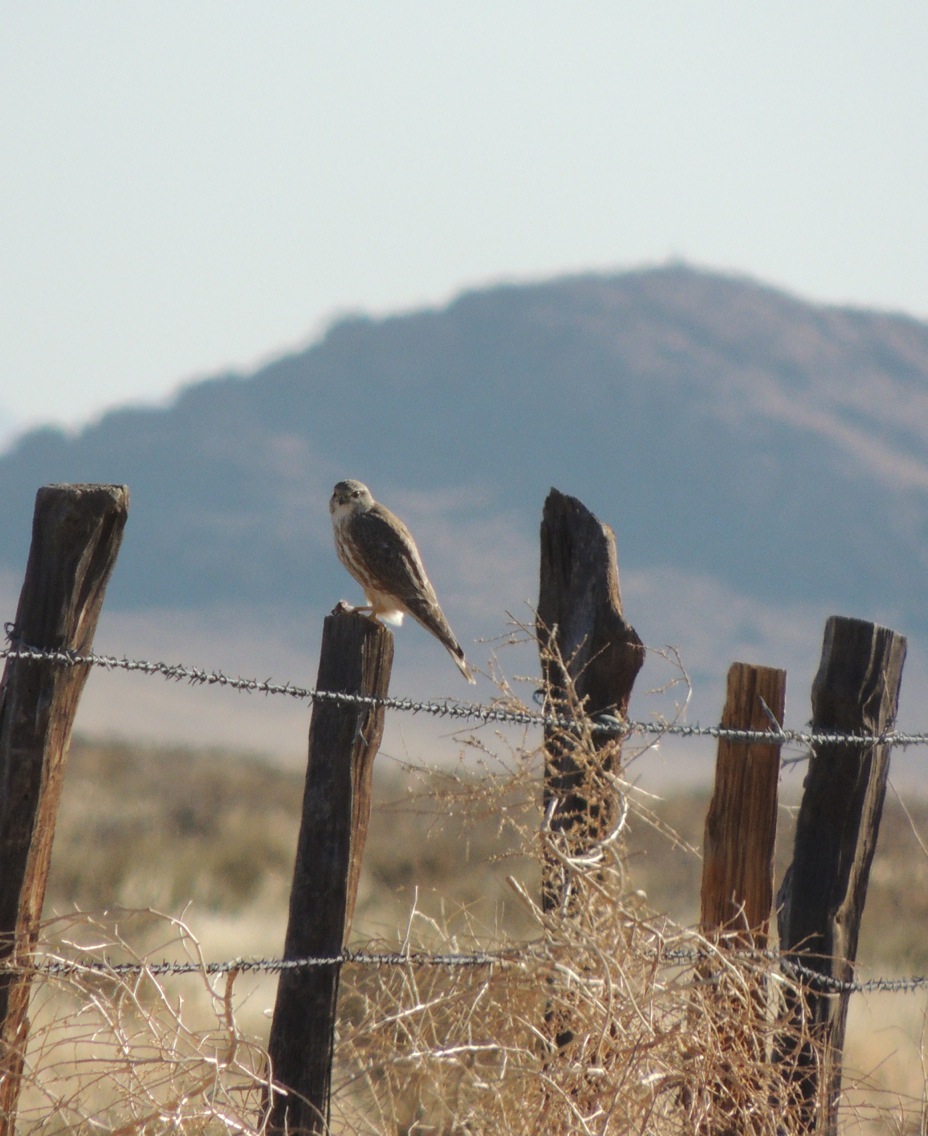
This Merlin perched on a fence post may be one of the culprits in our numerous sparrow mortalities. Photo by Denis Perez.
We’ve also observed that weather appears to influence mortality rates: The day after a snowstorm we located four predated sparrows. Perhaps birds were less camouflaged in the snow, were weakened by the cold or had to venture into more exposed areas to locate food. Although distressing and disheartening, this valuable data will help us understand what factors affect winter survival. Nevertheless, we still cringe when a bird’s signal originates from a mesquite, the Loggerhead Shrikes’ preferred site for sparrow impaling.
As a transmitter’s battery lifespan is only 8 weeks, this upcoming week we will be making our second round of recapture attempts to replace transmitters. We had high success with our first attempt in December, with 14 out of 17 birds recaptured. We hope to continue to monitor many of the same birds we initially banded in November through mid-March. At this point, we will recapture them one last time to remove the transmitters before spring migration. In the meantime, we will continue to watch the saga of the Baird’s and Grasshopper Sparrows unfold.
Thank you to the National Park Service, U.S. Forest Service International Programs and the Commission for Environmental Cooperation for providing funding for this project.
~ Erin Strasser, Grassland Bird Telemetry Field Team Leader


